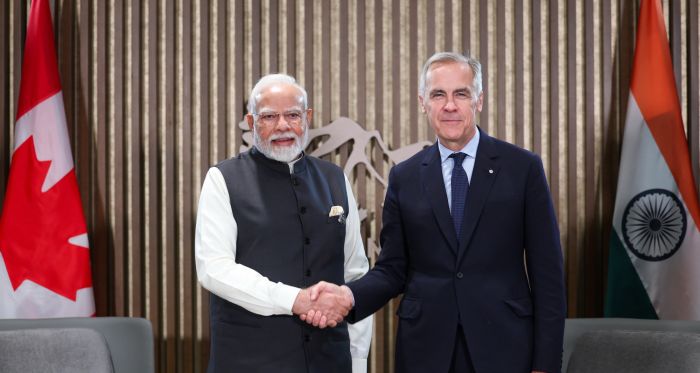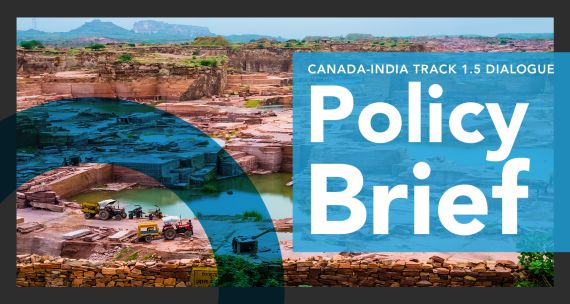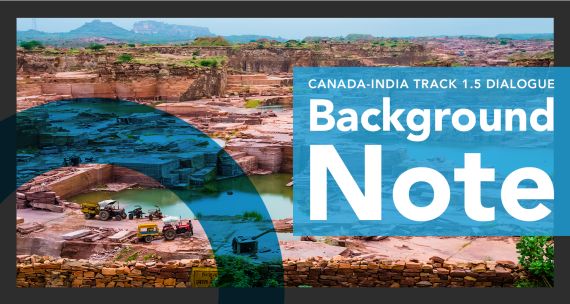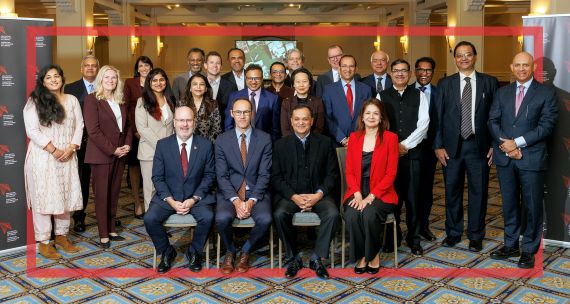Canada–India relations are showing early signs of recovery after a prolonged diplomatic freeze that began in September 2023. A breakthrough came with a constructive meeting between the two prime ministers, Mark Carney and Narendra Modi, on the sidelines of the G7 Leaders’ Summit in Kananaskis, Alberta, in June 2025. The two leaders agreed to restart senior ministerial and working-level engagements in areas such as artificial intelligence (AI), liquefied natural gas (LNG), critical minerals, and supply chain resilience. The leaders also instructed officials to take steps to reactivate existing co-operation mechanisms. These include Ministerial-level Strategic, Trade and Energy Dialogues; Foreign Office Consultations; a Joint Committee Meeting on Environment; and other sector-specific joint working groups. The Carney-Modi meeting was followed by meetings between law enforcement officials on shared security concerns and the reinstatement of high commissioners in early September.
On September 19, Canadian Deputy Foreign Minister David Morrison led a Global Affairs Canada delegation to New Delhi for talks with India’s Ministry of External Affairs. New Delhi described the meeting as “pre-Foreign Office Consultations” aimed at restoring stability in bilateral ties. Both sides agreed to revive dialogue mechanisms across trade, defence, energy, civil nuclear co-operation, critical minerals, space, science and technology, and agriculture. Foreign Office Consultations, last held in Ottawa in April 2023, may resume as Canadian Foreign Affairs Minister Anita Anand has expressed her intent to travel to India soon.
At the same time, on September 20, Canadian National Security and Intelligence Advisor Nathalie Drouin met her Indian counterpart Ajit Doval in New Delhi, where they discussed their respective security concerns and agreed to exchange information reciprocally.
This bilateral reset comes amid global uncertainty, economic shocks, and intensifying geopolitical rivalries. New Delhi requires trusted partners in energy security, technological collaboration, foreign investment, and climate action as it manages strategic competition with Beijing and heightened tensions with Washington. In August, the U.S. imposed a 50 per cent tariff on Indian imports, including a 25 per cent punitive levy linked to Russian oil purchases. Ottawa, meanwhile, is diversifying economic partnerships beyond the U.S. and China and views India as a key Indo-Pacific partner. Both capitals remain committed to a rules-based trading order and effective, representative multilateralism.
The path from reset to full-scale re-engagement — spanning trade, technology, critical minerals, energy, and regional co-operation — will not be easy, but in the interest of both countries. Stronger co-operation will help both countries manage emerging technologies, de-risk supply chains, and bolster economic resilience alongside national security. For Canada and India alike, these priorities are now central to their economic and security agendas.
Strategic Issue I: Economic Co-operation, Trade, and Investment
Canada’s total merchandise trade with India grew by 61 per cent between 2015 and 2024, reaching C$13.3 billion in 2024. Imports grew faster than exports, rising 103 per cent compared to 23 per cent for exports. In terms of services trade, Canada’s trade with India grew sharply between 2015 and 2023, with total trade rising from C$2.6 billion in 2015 to C$17.3 billion in 2023 — a sixfold increase. Canadian services exports, driven largely by travel — particularly education-related and business travel expenditures by Indian nationals — surged by 976 per cent, while service imports rose by 151 per cent over the same period.
In the current geopolitical context, Canada’s priority is to secure reliable, long-term partnerships in its largest export sectors: energy (oil, gas, and coal), precious metals and minerals, automotive, aerospace, agriculture and agri-food, forestry, and services. Among its Indo-Pacific partners, India offers a comparable scale to China, with high demand for energy, critical minerals, agriculture, aerospace, and forestry products, alongside the technologies and investment required to advance several of these sectors.
With its goal of becoming a developed country by 2047, India is focused on boosting manufacturing and attracting partnerships in priority sectors, including infrastructure, clean energy, electronics and semiconductors, pharmaceuticals, digital and fintech, agri-food, and automotive, including electric vehicles (EVs). In response to recent U.S. tariffs, New Delhi seeks to diversify trading partners while maintaining stable relations with China. However, their regional rivalry, security concerns over their unresolved border dispute, and a roughly US$100-billion trade deficit make India cautious about deeper economic integration with China.
Scrutiny of India’s Russian oil imports and Moscow’s increasing reliance on Beijing are likely to limit further India-Russia economic co-operation. Simultaneously, India is strengthening ties with Japan, the E.U., Australia, and other Western countries to advance its development goals and diversify economic and technology partnerships. Canada can position itself as a reliable partner in supporting India’s technology, investment, energy, and food security needs.
Negotiations for a bilateral Comprehensive Economic Partnership Agreement began in 2010, following a joint study highlighting its benefits, but stalled after the 10th round in 2017. In 2022, efforts shifted to a more limited Early Progress Trade Agreement, though talks were paused in September 2023 amid rising political tensions. At the June 2025 G7 Summit, Carney and Modi signalled interest in restarting negotiations. Without an agreement, however, tariff and non-tariff barriers — including high duties on agriculture, automobiles, fertilizers, and forestry, regulatory changes, the absence of a digital trade framework, and limited political momentum — continue to limit the full potential of bilateral economic engagement.
Strategic Issue II: Artificial Intelligence and Emerging Technologies
Canadian landscape
Canada is positioning itself as a global leader in AI through research hubs in Montréal, Toronto, and Edmonton, anchored by the Canadian Institute for Advanced Research’s (CIFAR) Pan-Canadian AI Strategy — the world’s first national AI strategy, launched in 2017. Canada hosts about 10 per cent of the world’s top-tier AI researchers — the second highest concentration globally — and ranks first in the G7 for AI research publications per capita. In 2022–23, the country had over 140,000 active AI professionals (up 29 per cent from the previous year) and more than 670 AI startups.
In 2018, Canada launched the Scale AI Cluster to encourage the adoption of AI across sectors. Scale AI now drives successful projects in health care, logistics (smart ports and digital twins), and sustainability (greener manufacturing), while also advancing workforce training, intellectual property strategies, and adoption support — illustrating how Canada’s AI ecosystem extends from research to applied innovation.
Canada has also taken a leading role in advancing responsible AI. Along with France, it co-founded the Global Partnership on AI (GPAI), introduced the Artificial Intelligence and Data Act — one of the first proposed national AI laws — and developed a Voluntary Code of Conduct for advanced generative AI. In 2024, Canada ranked first in the AI and Democratic Values Index, underscoring its emphasis on aligning AI with human rights, transparency, and safety.
Ottawa appointed its first Minister of Artificial Intelligence and Digital Innovation, Evan Solomon, in May 2025. This reflects the government’s focus on digital transformation, business adaptation, domestic data infrastructure, and responsible legislation — signalling AI’s importance as both an economic and security priority.
Indian landscape
India is rapidly advancing as a global AI hub through the India AI Mission (2024), which allocated ₹10,300 crore (C$1.6 billion) over five years to build one of the world’s largest AI compute infrastructures. The government also launched the IndiaAI Dataset Platform to provide access to anonymized datasets and established Centres of Excellence in health care, agriculture, and sustainable cities. India is also developing foundational AI models such as BharatGen (a multimodal LLM), Sarvam-1 (for Indian languages), and Avatar AI, reflecting a focus on multilingual and governance applications. AI is also being integrated into India’s digital public infrastructure (e.g. Aadhaar, Unified Payments Interface), enabling large-scale applications in governance and citizen services.
Upskilling the large labour force in response to AI-induced job losses remains a key priority. The IndiaAI Future Skills initiative seeks to expand AI education from undergraduate to Ph.D. levels, supported by fellowships and new AI labs in Tier 2 and Tier 3 cities. India now accounts for 16 per cent of the global AI workforce and ranks first worldwide in AI skill penetration. At the same time, universities and research institutions are developing safeguards against privacy risks and cybersecurity threats to keep AI growth inclusive and secure.
In 2025, India co-chaired the 2025 AI Action Summit with France, underscoring its role in shaping international AI governance. Canadian Prime Minister Justin Trudeau signed the Leaders’ Declaration on inclusive and sustainable AI at the summit. Looking ahead, the India-AI Impact Summit 2026 in New Delhi (February 19–20, 2026) offers another opportunity to expand avenues for Canada–India collaboration.
Canada–India collaboration
Although collaboration is currently channelled mainly through multilateral platforms such as the G20 and GPAI, there is scope to launch a bilateral AI framework. Potential areas include joint research on responsible AI and data governance, semiconductors and chip R&D, green data centres, and cybersecurity partnerships to protect critical infrastructure and financial systems. However, challenges remain, especially those pertaining to data privacy concerns and divergent digital governance models, as well as security issues, including cyber risks, and geopolitical sensitivities around defence applications of AI. Nevertheless, Canada’s strengths in governance and sustainable infrastructure complement India’s scale in compute, data, and talent, creating opportunities to jointly shape the emerging AI landscape.
Strategic Issue III: Critical Minerals and Energy Security
Canadian landscape
Canada launched its Critical Minerals Strategy (CMS) in 2022 with the aim of expanding domestic production capacity, attracting investment, and establishing secure global supply chains. Ottawa is aligning its critical minerals strategy with the G7 Critical Minerals Action Plan, launched under its presidency in 2025. Together with G7 partners, Canada has pledged to foster responsible investment, promote standards-based markets, ensure transparency, and diversify supply chains to reduce vulnerabilities and build an alternative to China-dominated supply networks.
Diversifying away from China is essential, given Beijing’s dominance in refining and its tendency to use export controls as a coercive geopolitical tool. Reducing reliance on the U.S. is also a priority for Ottawa, as Washington currently absorbs 59 per cent of Canadian exports, leaving Canada heavily exposed to U.S. demand shifts and policy decisions. Crucially, India endorsed the G7 Critical Minerals Action Plan in 2025, opening the door for deeper bilateral and multilateral collaboration in trade, research, and technology to strengthen resilient critical minerals value chains.
Of the 34 minerals identified by Ottawa as “critical” and prioritized for economic development and federal investment, 22 also appear on India’s priority critical mineral list, including lithium, graphite, nickel, cobalt, copper, and rare earth elements — offering a strong basis for bilateral co-operation. Despite this convergence, Canada’s exports to India remain minimal — about 2 per cent of total critical mineral exports. Potash, Canada’s largest critical mineral export to India, declined sharply in value from C$966 million in 2022 to C$571 million in 2023 and C$402 million in 2024 — its lowest level since before 2020 — driven by falling global prices. Beyond potash, exports are mostly concentrated in aluminum and copper scrap, copper ores, and non-alloyed nickel. Significant potential exists to expand trade in lithium, cobalt, uranium, and rare earths as Canada seeks to scale up production and refining capacity.
Investment patterns further underscore untapped opportunities. Australia dominates Canada’s Indo-Pacific critical minerals investment landscape, accounting for 85 per cent (C$23 billion) of FDI into Canada and 64 per cent (C$71 million) of Canada’s outbound flows in the period 2020–2024. China is the second major player, with 14.7 per cent (C$4 billion) of inward investment and nearly 17 per cent (C$18.6 million) of Canadian capital directed to the country over the same period. India has virtually no presence in either direction, underscoring the need to foster two-way investment and institutionalized mechanisms that can unlock joint opportunities in trade, exploration, refining, and research collaboration.
A recent step in this direction came in September 2025, when CSIR – Institute of Minerals and Materials Technology in Bhubaneswar, India, and the University of Saskatchewan signed a Joint Declaration of Intent to advance critical minerals research. The partnership marks an early example of bilateral collaboration to advance research and innovation in mineral extraction and processing, promote exchange of knowledge and expertise, and strengthen human resource development and academic programming.
Canada is also advancing its broader energy security agenda. The completion of the Trans Mountain Expansion (TMX) pipeline in May 2024 expanded oil export capacity, with China emerging as the largest new buyer, while Canada’s LNG shipment to Asia — delivered to South Korea in July 2025 — underscored its role as a growing global energy supplier. Although Canada currently lacks LNG export infrastructure to India, it could become a future source as India diversifies its conventional energy imports. On the clean energy side, India’s National Green Hydrogen Mission aligns with Canada’s strengths as a low-cost, low-carbon hydrogen producer, while nuclear energy offers another area of synergy, with Saskatchewan positioned as a reliable uranium supplier and potential partner in technology collaboration.
Indian landscape
New Delhi has committed to achieving net-zero carbon emissions by 2070, supported by targets of expanding clean energy capacity, CO₂ reductions, and lowering carbon intensity. India currently faces significant energy transition challenges, particularly intermittency and grid stability issues, as renewable sources like solar and wind cannot provide a constant power supply. Investment in energy storage and flexible grid systems is an area where Canada can contribute through its technological expertise and investment partnerships. Canada’s leadership in carbon capture, utilization, and storage also presents opportunities for collaboration.
Critical minerals, essential for renewable energy technologies such as batteries, solar panels, and wind turbines, could also serve as an area for closer bilateral co-operation. Alongside, India is investing in indigenous defence and aerospace systems and developing a domestic semiconductor ecosystem — sectors that, like its energy transition goals, depend on secure access to critical minerals. Meeting New Delhi’s energy transition and security goals requires diversifying away from China, whose recent restrictions on critical mineral exports to India expose significant risks. To strengthen capacity, India launched its National Critical Minerals Mission in January 2025, targeting the full value chain — from exploration and mining to processing and recovery from end-of-life products. Prime Minister Modi recently reinforced the mission’s strategic importance, noting that exploration of critical minerals is already underway at more than 1,200 sites. However, to develop capacity across the value chain, India will require partners who can serve as reliable suppliers and contribute technical expertise and investment potential. Canada — with its vast mineral resources, mining know-how, investments, and refining technologies — can support India’s exploration efforts and help strengthen supply chain resilience.
Canada-India collaboration
Future collaboration can expand across both conventional and clean energy. Canada can supply critical minerals, crude oil, LNG, uranium, and hydrogen while also supporting India’s critical minerals value chain through joint ventures in exploration, processing, battery manufacturing, and recycling. By supplying resources, sharing refining technologies, and co-investing in plants and downstream industries, Canada can help India expand domestic capacity, reduce dependence on China, and integrate into a secure Indo-Pacific supply chain.
Conclusion
While Ottawa and New Delhi have begun a bilateral reset, unlocking the full potential of their relationship will require sustained high-level engagement and a commitment to finding common ground across key strategic sectors where both sides stand to benefit. These sectors — including trade, investment, clean and conventional energy, technology, and critical minerals — are under increasing pressure from great-power competition and global disruption. Strengthening co-operation in these areas will be essential for building a more resilient bilateral relationship that benefits stakeholders in both countries.
- Edited by Vina Nadjibulla, Vice-President Research & Strategy, and Michael Roberts, Communications Director.







